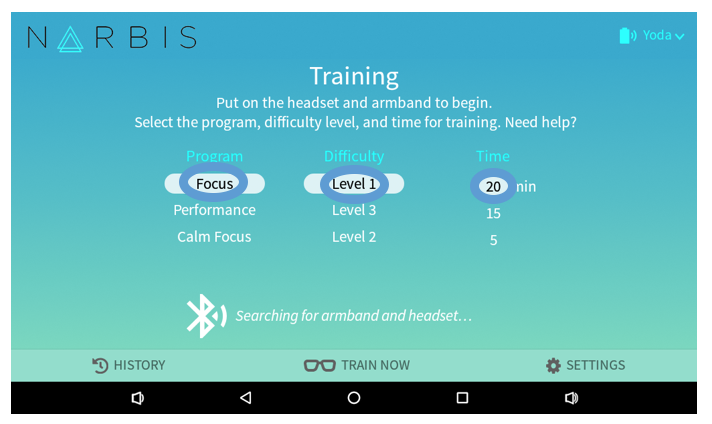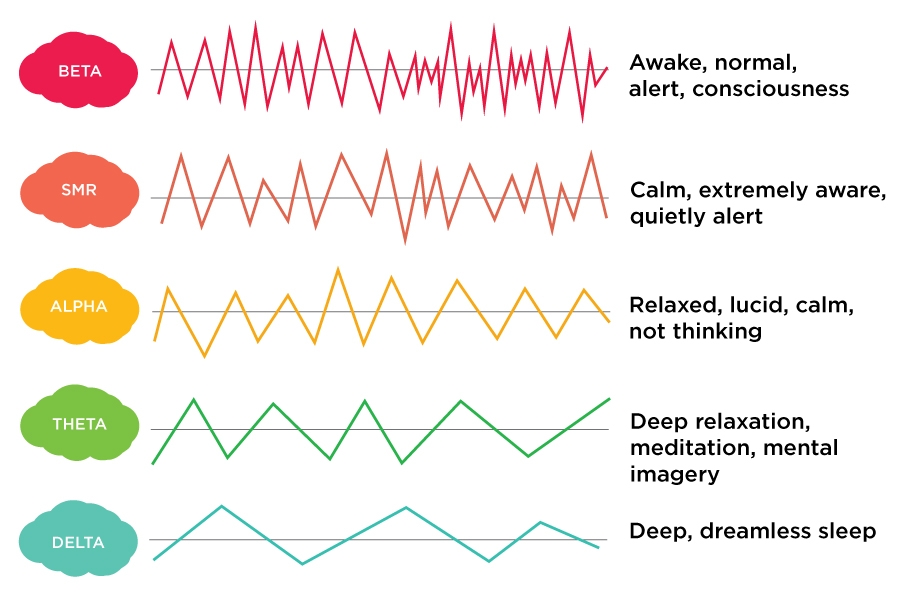Why are there three different settings (focus, calm focus, performance) and what do they mean? What’s the difference among them, and how do you know on which setting to practice?

Most people interested in practicing attention will use the focus program.
Other people looking to practice relaxation to reduce impulsivity or feelings of anxiousness, as well as practice attention, will use the calm focus program. With the calm focus program, the lenses will remain clear when more SMR (12Hz-15Hz) and less Alpha and Theta are detected and change tint when less SMR and more Alpha and Theta are detected.
Lastly, those interested in honing their concentration edge — be it for sports, music, or work performance —- will use the peak performance program. With the peak performance program, the lenses will remain clear when more high-Beta (15Hz to 18Hz, related to performance) and less Alpha and Theta and change tint when less high-Beta and more Alpha and Theta are detected.

Related Articles
What are signs that your focus/calm focus/performance is improving?
Improvements may seem subtle at first. In fact, you may notice and reflect on these positive changes after they happen. You may find that you completed a task in far less time than in the past, read and understood material the first time, or found ...What are the different brain patterns that Narbis is measuring?
This is Your Brain on Hyperfocus Science is better understanding how brainwaves — specifically the suppression of certain brainwaves over others — leads to hyperfocus. In a recent study published in Experimental Brain Research, scientists examined ...Can users actively influence the changes in lens tinting and graphical peaks/valleys in the Narbis smart glasses, which indicate focus improvements, or are these changes entirely beyond their control?
The variations in lens tinting and the corresponding graphical peaks and valleys displayed in the Narbis app are designed to reflect your focus state, utilizing algorithms based on NASA-developed technology. These changes are directly influenced by ...What are some symptoms of distraction or lack of focus?
Especially this past year, many people have reported feeling foggy or disconnected from their environment; or getting lost in time. Real-life examples realizing after having been driving for a while that you don’t remember how you got to your ...How can you tell that Narbis is working? In other words, how do I interpret the results of my training and how do I know if I’m improving?
After you complete a training, you’ll see a summary displayed on the app that shows your focus percentage and a graph displaying your focus level over the length of your training. If learning is occuring during the training, you will see that the ...